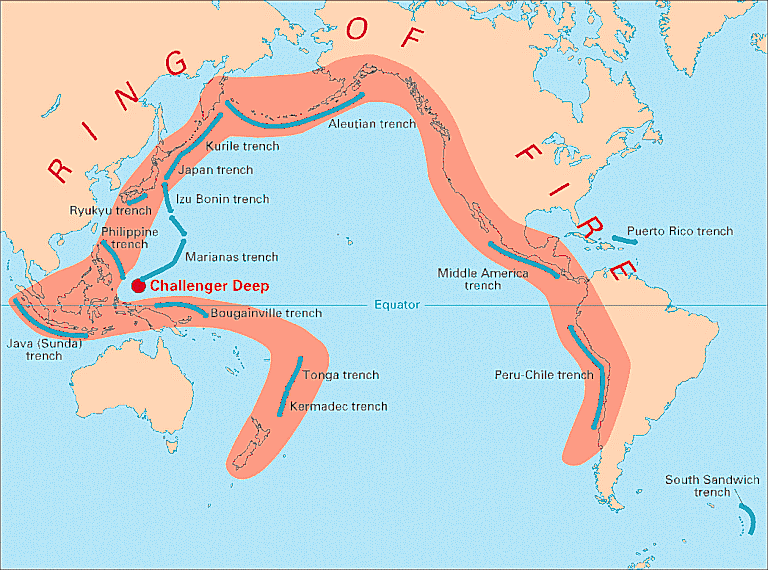Volcano

Look at the picture. What does it show? It seems to be an extremely hot liquid erupting from inside of the earth’s surface and this is volcano. We can say it almost looks like firework -a tubri.

Look at the picture of a tubri and the volcanic eruption. There seem to be certain resemblances between two pictures, isn’t it?
The word Volcano comes from Roman word vulcan, — Roman god of fire.
In reality a volcano is an amazing natural phenomenon. It is really a very dangerous and deadly occurrence. But the question is, what is a volcano? According to the dictionary we can say that a volcano is a mountain or hill, typically conical, having a crater or vent through which lava, rock fragments, hot vapour and gas are or have been erupted from the earth’s crust.
Perhaps you already know that the earth’s crust is made up of many pieces or plates of rocks, these are called tectonic plates and these plates are fit together like jigsaw puzzles to form the earth’s crust. Volcanoes are often found at the meeting point or joining point of these tectonic plates. But volcanoes may occur in the places where extremely hot rocks are present under the earth’s crust. Another amazing fact is that volcano may also occur under the ocean and under ice caps.
To understand volcano correctly we have to discuss many aspects of the phenomena ‘volcano’.
First of all, you may like to know about lava. To answer this query we have to start with the question what is magma?

All of you know that the inside of the earth is very hot and rocks under the ground melt at the temperature between 800-1200 degree Celsius. We can compare this temperature with the temperature in Delhi or Rajasthan, in peak summer that rises up to about 48 /50 degree Celsius. If we go towards the centre of the earth, that is, the core of the earth, the temperature and pressure both increase. Rocks present under the earth’s crust, melt because of the effect of both high pressure and high temperature. When rocks inside the earth melt, its mass or weight remains same but volume increases and then these molten rocks become less dense or lighter than its surroundings. This molten and semi-molten rock mixture under the surface of the earth is called magma. This magma may also contain gases, suspended crystals, etc. Actually, magma is like a thick flowing substance under the earth’s surface. As it is lighter than the rocks of its surroundings, it rises up and the space where it is collected is called magma chamber. When this magma comes out then it is called lava.
Now, what causes this magma to come out? There are mainly three reasons or combination of reasons for volcano eruption. The causes behind the eruption are as follows:
We have already discussed that magma is lighter than the rocks in its surroundings that means that the density of magma is less than its surroundings. You may have seen that oil floats on the water, because oil has less density than water. Similarly magma also rises upward and reaches the earth’s surface, because of its lower density than the rocks in its surroundings, and whenever there are any dent or fissures it tries to come out and eventually it erupts.
Another reason is when more fresh magma is collected in the already filled up magma chamber, then the volume of magma becomes more than the capacity of magma chamber and this causes an upward movement of magma through a conduit or channel to gain escape from the chamber.

Another reason is presence of dissolved gasses in magma. Magma also contains substances like water, sulphur dioxide, carbon dioxide. These substances have a special characteristic that is they can easily separate out from the solution with decreasing external pressure. And these are called volatile substances. Sometimes when magma moves towards the earth’s surface, pressure decreases and this decrease in pressure separates out the substance like water, sulphur dioxide, carbon dioxide etc. from magma as bubbles and creates an upward pressure causing an explosion, and with that magma erupts through dent (as shown in the picture above).
There are many volcanoes in the world. Some volcanoes are still active. Some famous volcanos are Mt Vesuvius in Italy, Krakatoa in Indonesia, Mount St. Helen in United States, Mauna Loa in Hawaii etc. Some active volcanoes are mount Etna in Sicily in Italy, Mt. Merapi in Indonesia, Erta Ale in Ethiopia, Pacaya in Guatemala etc.
Another interesting fact about volcanoes is that 90% of all volcanoes on the earth is concentrated in a 40,000 km horseshoe shaped area under the Pacific Ocean (shown in picture below).

The world’s largest active volcano is Mauna Loa in Hawaii.
Another fascinating thing is that the soil near a volcano is rich and fertile and that is the reason that people often settle in the slopes of volcanic mountains.
One more interesting fact is that sometimes birds bury their eggs in the warm soil or sand near volcanoes to hatch them.
In spite of the fact that a volcano is a devastating phenomenon, it is also very interesting, from a scientific point of view as well.






Responses